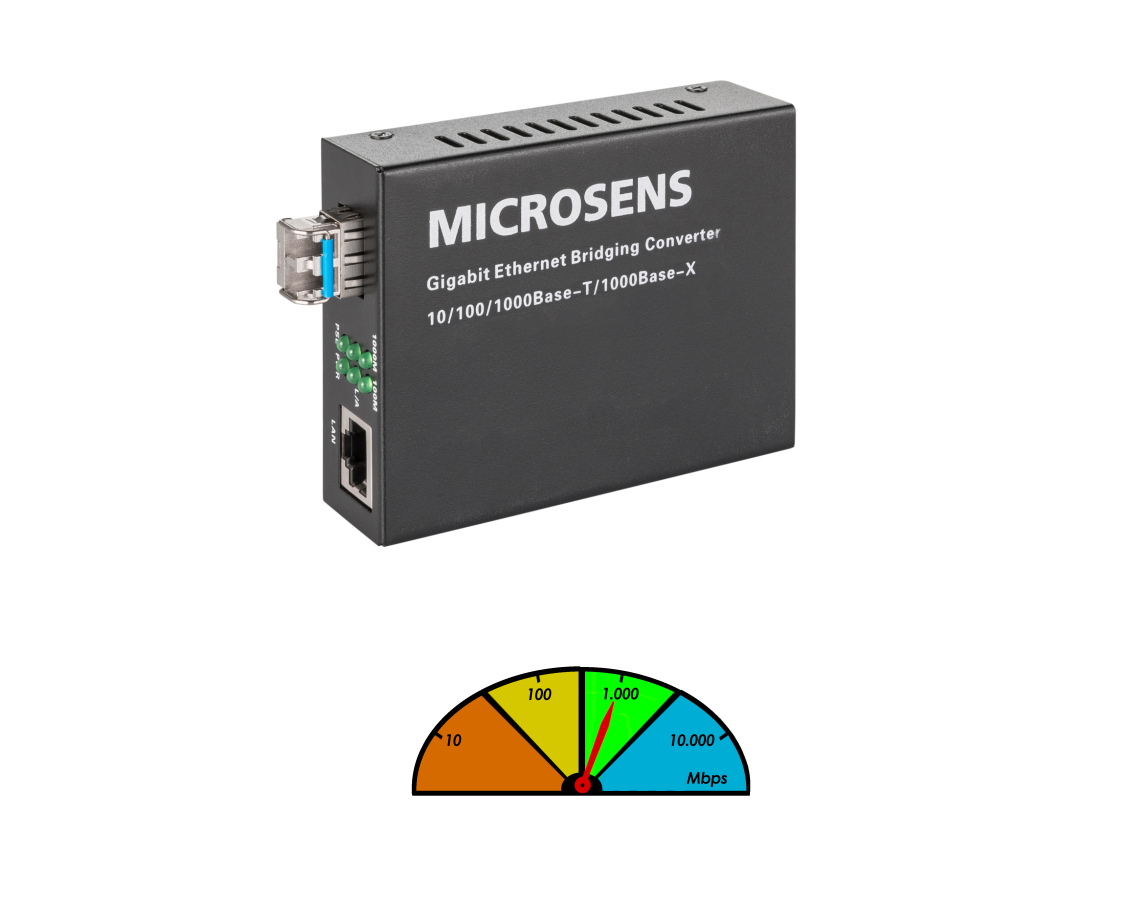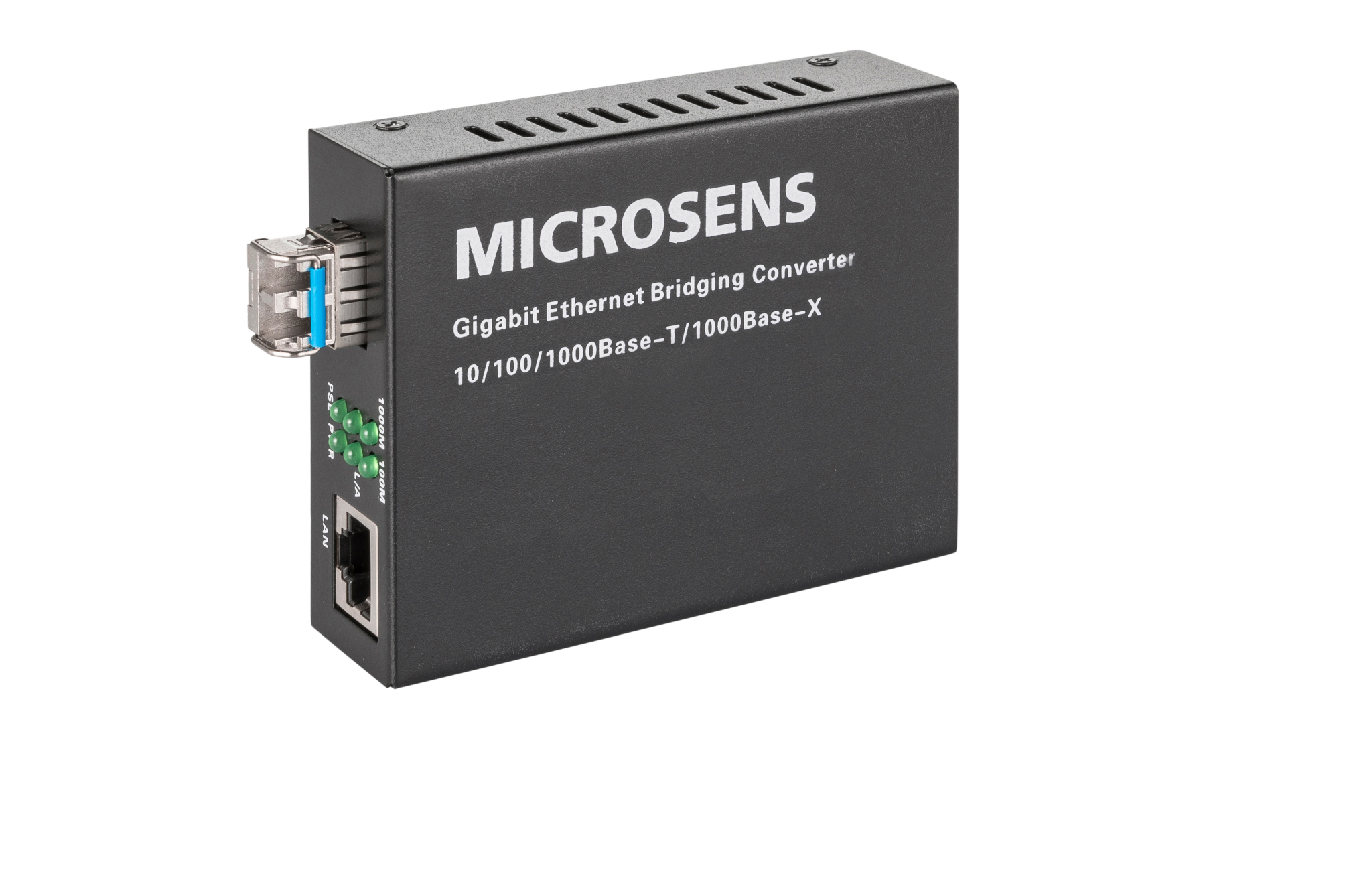Bridges (typically called media converters, although there are significant differences here) in the typical desktop design are among the simplest components for converting the Ethernet transmission media copper / fiber optic, but also for implementing Ethernet-based services between fiber optic cable types (typically single mode to multimode).
The bridging of long transmission distances, the galvanic isolation or the bridging of communication paths susceptible to interference (EMC!) are the main reasons for using these bridges. The MICROSENS product portfolio covers exactly these requirements in the gigabit range (1000Base-X) with its wide range of variants:
The standard bridge in desktop design converts 10/100/1000Base-T to 1000Base-X, whereby there are various variants:
- 10/100/1000Base-T (RJ-45) to 1000Base-SX (fixed optics, SC multimode)
- 10/100/1000Base-T (RJ-45) to 1000Base-LX (fixed optics, SC Single Mode)
- 10/100/1000Base-T (RJ-45) to 1000Base-X (SFP slot)
In addition to the copper / fiber optic conversion already described, there are further components for the conversion of fiber optic cable types and the conversion from single mode to multimode (and vice versa).
- 100/1000Base-X to 1000Base-X (SFP slot to SFP slot, speed adjustment possible)
The conversion to single fiber (also known as BiDi or simplex) is becoming more and more common, using flexible optics (SFPs) that transmit and receive via just one fiber. This technique is mainly used in the FTTH range to save fibers. Currently, this technology is increasingly being used within existing (single mode) cabling in order to double existing cable capacities.





















